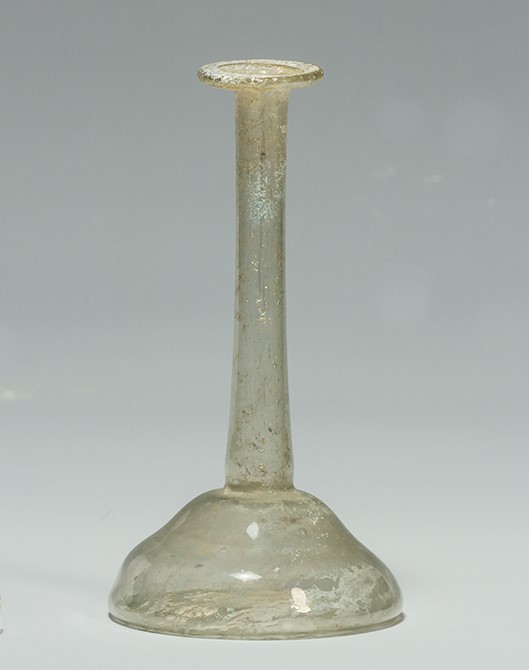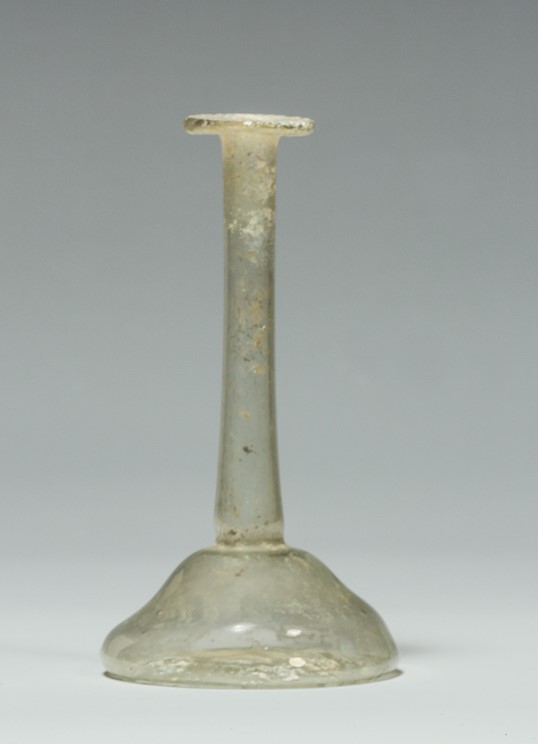Title: Unguentarium - 2012.02
Acquisition number: 2012.02
Author or editor: Glen Goodwin
Culture or period: Roman Imperial
Date: c. 3rd - 4th century AD.
Material: Glass
Object type: Unguentarium
Dimensions: 86mm (h)
Display case or on loan: 9
Keywords: Glass, Roman, Unguentarium, Imperial, Sung Dynasty, Philippines
2012.02
Unguentarium
Height 86mm.
Possibly Roman, c. 3rd -4th century AD.
Purchased by Bill Guy (first President of the Friends of the Classics Museum) in 1978, and presented to the ANU Classics Museum by Kate Guy in 2012.
Glass campaniform unguentarium, with patch of iridescence at its shoulder. Unguentaria are also referred to as balsamaria, and, mistakenly, lacrimarii or ‘tear bottles’, owing to a belief they may have been used to collect the tears of mourners. The most common usage of unguentaria would be the storage of oil, perfume, or powdered cosmetics. They are frequently found in a funerary context.
This particular unguentarium was discovered in Laguna de Bay in the Philippines in association with Sung Dynasty ceramics (10th -13th century AD). It is unclear how a piece of Roman glassware came to be in a lake in the Philippines: it is possible the unguentarium travelled along the Silk Road from Rome to China, then on to the Philippines in the early Middle Ages.

